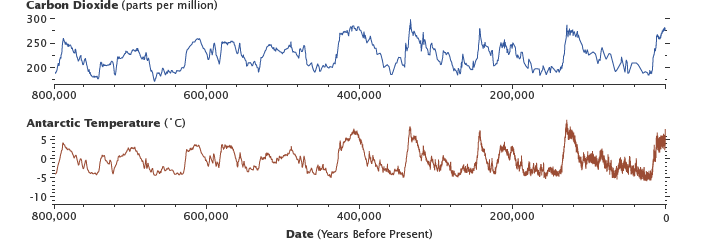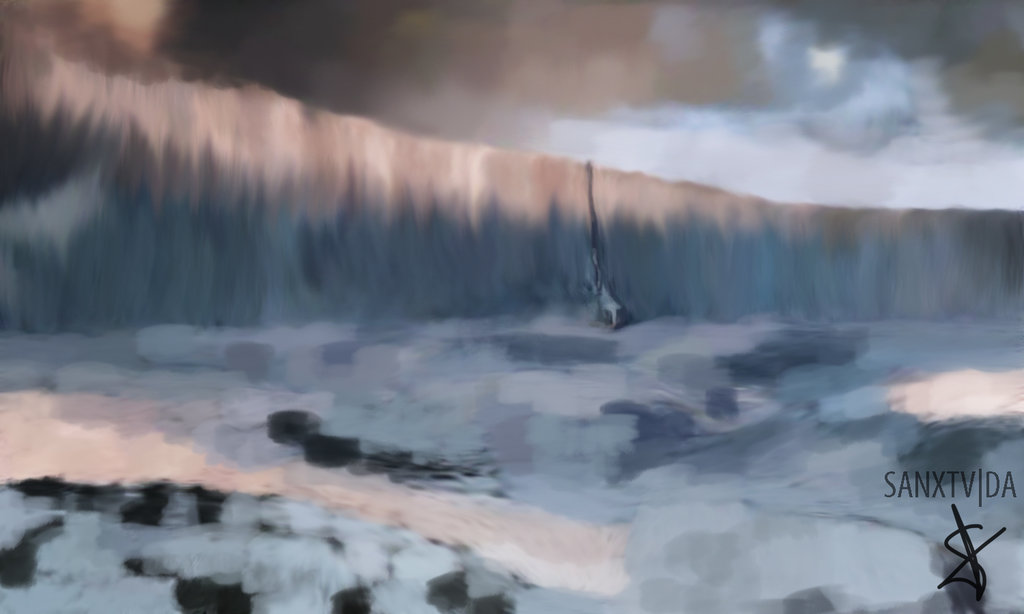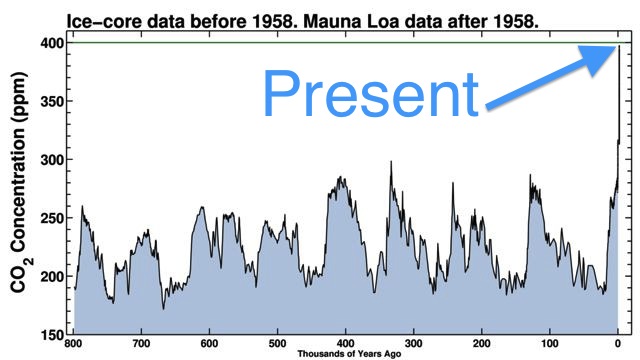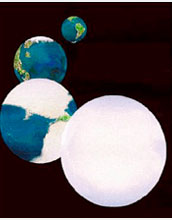The widely popular HBO show, Game of Thrones, features an unusual climate: summers that can last for seven years and winters that span a generation. Could this type of climate happen on Earth?

Source: mezclaconfusa
The most prevalent theme in the show (and the books on which its based) is the onset of a brutally long and cold winter. On Earth we have had similarly epic winters: from “The Little Ice Age” to “Snowball Earth,” the planet’s history is rich with endless winters. Let’s examine what happened in the past.
Snowball Earth
You may not know it, but scientists have shown that deep in the Earth’s past (twice between 800 and 550 million years ago), our planet was completely covered in ice. How this began is still being debated, but it is thought that the position of land masses around the equator increased the planet’s albedo (the reflective power of a surface). Because tropical continents are subject to more rainfall, such landmass positioning may have also depleted carbon dioxide from the atmosphere via weathering of rocks containing silicate. Thus, the Earth was deprived of the “blanket” necessary to keep our world warm. A “runaway icehouse effect” took place as the growing ice masses reflected more and more sunlight away, eventually reaching the equator.
How did Earth escape this winter? Volcanic activity continued and released CO2 and methane over tens of millions of years, raising the temperature and melting the ice away.
Ice Ages
The Earth’s location relative to the sun would suggest a much warmer planet than the one we have. In fact, the Earth has been warmer in the past, as it was during the time of the dinosaurs. But ice has played a major role in the history of the planet in the last 50 million years. Many factors force ice ages, such as atmospheric composition (especially CO2 and Methane), tectonic plates, and Milankovitch cycles, which are variations in the Earth’s orbit around the sun caused by gravitational interactions. Thankfully, we are currently in a warm, “interglacial” period. Glacial periods, however, take many thousands of years to develop. Hardly fast enough to say “winter is coming!”

Carbon dioxide levels are highly correlated with temperature. Antarctic ice-core data traces this relationship for 800,000 years. Image: NASA, Graphs by Robert Simmon
Younger Dryas and Heinrich events
But on occasion, glacial advancement does occur faster. During the Younger Dryas event, between approximately 12,800 and 11,500 thousand years ago, abrupt climate change drove most of the northern hemisphere into a glacial period, even though the planet had already entered an interglacial stage.
The culprit for the Younger Dryas was a freshening of the ocean in the North Atlantic due to the rapidly-melting glaciers over North America and Europe. The effect was to slow down the ocean circulation when the heavy, salty water of the North Atlantic was disturbed by the melt water (which usually sinks to the bottom of the ocean near Greenland). Thus, the Gulf Stream did not reach the North Atlantic, cutting off warm waters that keep the region temperate. If this sounds familiar it’s because it was the premise for the movie The Day After Tomorrow. Annual average temperatures dropped to -5°C (27°F) in the UK, for example. However, unlike the few days it took to cover North America and New York City in ice in the movie, in reality, the Younger Dryas event took at least a decade to occur. Again, not quite the speed of the Game of Thrones winter.
Heinrich events, on the other hand, can change the temperature in mere years! These events are characterized by armadas of icebergs that have broken off from the ice sheet and released copious amounts of fresh water into the North Atlantic. As with the Younger Dryas, this affects ocean circulation and prevents warm waters from reaching higher latitudes.

“The wall” in Game of Thrones is not too far from reality. Glaciers during ice ages can be up to 1 km deep. Image: Sanxtv
Volcanic and impact winters
But there is another way to change the climate very quickly. Volcanoes, for example, exude vast amounts of ash and sulfur dioxide into the stratosphere, causing a “dimming” of the sunlight as these aerosols reflect the incoming radiation. A much less extreme example is Mount Pinatubo’s eruption in the Philippines in 1992. Pinatubo reduced the global temperature by 0.5°C (1°F). In the past, super-volcanoes such as Yellowstone have put so much ash into the atmosphere that it blocked much of the solar radiation, cooling the planet so much that it forced glaciers to advance globally.
Large impacts from asteroids or comets can have the same effect as volcanoes. The vast amounts of dust, ash and other material dug up by these impacts also blocks solar radiation, inducing an “impact winter,” which is said to have occurred at the end of the Cretaceous period and could have had a hand in the extinction of the dinosaurs.
The influence of humans
There is another way in which the climate can swiftly change into winter: the nuclear winter. Through the tireless work of Carl Sagan, Stephen Schneider, and colleagues in the 1980s (and updated materials in recent years), climate models have shown that a global thermonuclear war would have the same impact on blocking radiation from the sun as a volcanic or impact winter.

Earth has not seen current levels of CO2 for at least 800,000 years. Image: Scripps Institution of Oceanography
Humans can also change the climate in another way: the extraction of carbon from the ground and emission into the atmosphere is causing the planet to warm. A rise in greenhouse gases has been linked with the warming of the planet and shrinking of ice sheets. In a sense, humans are creating what would be a long summer in Game of Thrones.
The Earth’s climate is fascinating and almost as magical as we tend to portray it in works of fiction. In fact, if you picture most movies or books that include rocky planets, it’s likely the Earth has seen all of those climates: an ice world, a volcanic world, a world covered in forests, a water world, a world with giant monsters. Unlike the movies, however, climate change is far less entertaining — and it doesn’t come with a Hollywood ending.

